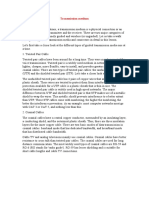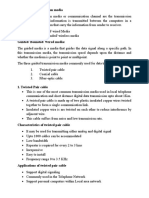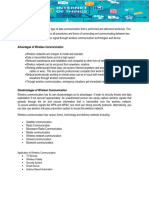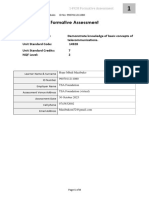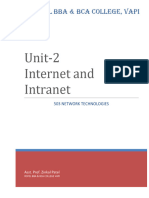0% found this document useful (0 votes)
9 views6 pagesNetworking Media Notes
Transmission media refers to the physical channels that carry data between devices in computer networks, which can be either wired or wireless. The document outlines the characteristics and types of transmission media, including guided media (like twisted pair cables, coaxial cables, and optical fiber) and unguided media (such as radio waves, microwaves, and infrared). Each type has its own advantages and disadvantages related to bandwidth, distance, interference, and cost.
Uploaded by
emmanuelmusonda437Copyright
© © All Rights Reserved
We take content rights seriously. If you suspect this is your content, claim it here.
Available Formats
Download as PDF, TXT or read online on Scribd
0% found this document useful (0 votes)
9 views6 pagesNetworking Media Notes
Transmission media refers to the physical channels that carry data between devices in computer networks, which can be either wired or wireless. The document outlines the characteristics and types of transmission media, including guided media (like twisted pair cables, coaxial cables, and optical fiber) and unguided media (such as radio waves, microwaves, and infrared). Each type has its own advantages and disadvantages related to bandwidth, distance, interference, and cost.
Uploaded by
emmanuelmusonda437Copyright
© © All Rights Reserved
We take content rights seriously. If you suspect this is your content, claim it here.
Available Formats
Download as PDF, TXT or read online on Scribd
/ 6














